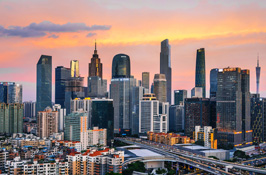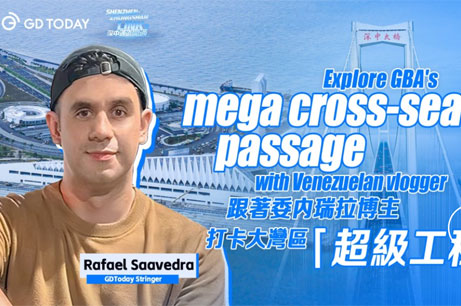Shenzhen metro vitalizes less developed area of city

Passengers board the carriages of Metro Line 16 of Shenzhen at the Technology University station on Wednesday morning, as the line enters service. [Photo by Deng Lianxu/For China Daily]
The first metro line running through karst areas in Shenzhen, Guangdong province, took its maiden trip at around 11 am Wednesday, serving as an important route to vitalize the less developed eastern part of the city, which should be linked with neighboring Huizhou city in the future.
The opening of Line 16 increased the length of the city's urban rail transit network to about 560 kilometers, making it the fourth longest in the country, according to its operator, Shenzhen Metro Group. About a fifth, or 128 km, was opened in 2022, the longest stretch of new track in a single year since the metro started operations in 2004.
The new line adopts the highest-level technology for unmanned trains, or GOA4, and is equipped with the country's finest smart operation system centered on traffic control, which can greatly speed up train dispatching efficiency, according to the group.
This is the first time the construction of a metro line in Shenzhen has passed through a karst landscape, which accounts for roughly 45 percent of the length of the 29.2-km line.
"It posed a great challenge. The landscape is prone to ground collapse and to flooding," Li Xinze, deputy manager of the Line 16 project of the China Railway Construction Corporation, told reporters.
The construction team learned from cities in other karst areas such as in the provinces of Guizhou and Yunnan and the Guangxi Zhuang autonomous region and invited top karst survey experts to discuss construction plans to ensure the safety of workers while keeping the project moving forward rapidly, said Li.
As a result, it took 1,814 days to finish the construction of Line 16 in a safe and efficient way, he noted.
As the line connects the districts of Longgang and Pingshan, which are known for their Hakka culture, metro stations have integrated many Hakka cultural elements into their design.
Eighteen of the 24 stations pass Hakka cultural landmarks in the city and are themed on sunshine, which express good wishes for cohabitation and mutual prosperity.
For example, the half-moon pond and lotus — architectural features of traditional Hakka houses — are to be found in Pingshanwei station.



 Print
Print Mail
Mail

